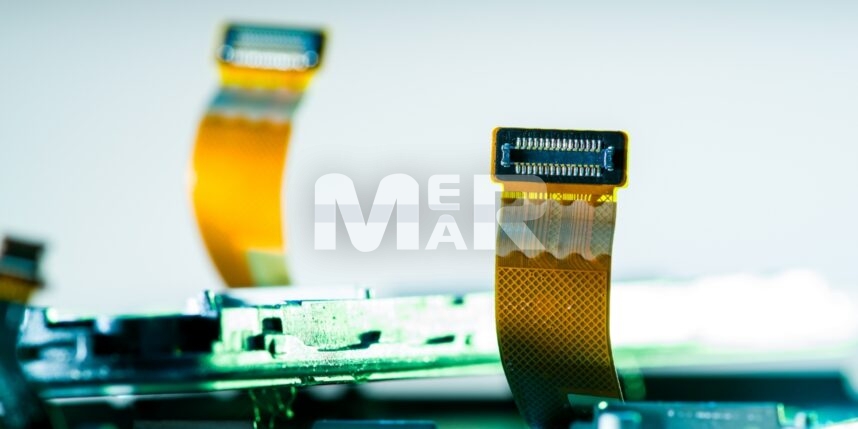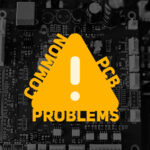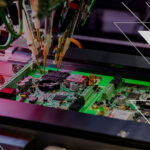What makes the Flexible Circuit Board assembly a perfect choice for your Industry?

When it comes to the types of PCBs, three main types of PCBs- rigid PCB, flex PCB and rigid flex PCB suit different needs in terms of design and construction. As their names suggest, rigid boards are inflexible, while flex boards can be designed to fit into different shapes. A rigid-flex board, of course, lies somewhere between the two.
Here is a comprehensive guide on flexible circuit board assembly including their benefits, the types of circuits, cost drivers as also the process involved in their assembly.
Benefits of Flexible Circuit Board Assembly
First up, let us look at the many benefits of Flexible Circuits that make them a perfect fit for miniature designs where saving weight and space is a priority.
Reliability
The big advantage that flexible printed circuit boards offer is the ability to create a customized routing path, adding to the dependability and reliability.
Suited for harsh environments
With flex PCBs you have the added advantage of the PCB working in harsh environmental conditions without any glitches. In fact, since this PCB can withstand high temperatures, it is particularly used in a wide variety of industries including but not limited to aerospace and military.
Durability
You can count on the flex circuit to go through several cycles without any disruption.
High vibration
Being ductile they can take to various shapes without breaking. They can also withstand high vibrations without any impact on PCB.
Lend themselves to miniaturization
They are perfect for a milieu where miniaturization is the norm. They go a long way in saving space as also reducing weight.
Signal Integrity
Flex circuits are eminently suitable for high-speed systems where signal integrity is extremely important
Reduced assembly time and cost
With flex circuits seamlessly integrating into different devices, what you have with flex circuits is reduced cost of PCB assembly. The reduced steps of assembly also come with decreased time of assembly and reduced error potential.
What are the aspects that influence the cost of a flexible circuit?
Number of layers
Typically projects with a high number of layers come at a high cost on account of increased cost of material, time and the technical challenges involved
Size and shape
Size and shape of the circuit determines how many circuits can fit on a manufacturing panel. In turn, this has an impact on the cost.
The class of the circuit
If your circuit falls under IPC class 3, typically there are more requirements as well as greater need for validation than class 2 circuits. In turn, this will have an impact on the cost.
Final finishes
The requirement of the final finishes can also impact on the cost.
Blind and buried vias
Multilayered PCBs typically require blind and buried vias to route a trace from one layer to another. This also has an impact on the cost.
Flex Circuit Board Assembly Process
The broad steps involved in the flex circuit board assembly process include:
Solder Paste Stenciling
Essentially this stage involves the application of the solder paste on the board. The use of a thin stencil ensures that the solder paste is applied to the board at the correct places.
Pick and Place
The use of a robotic device places the surface mount components on the PCB. A process of soldering follows. The automated process ensures precision.
Reflow Soldering
The PCB is now put on a conveyor belt. The heating of the board ensures that the solder melts. It now moves to the cooler where the solder solidifies. In this way the components are attached.
Inspection
A robust inspection process ensures that there are no shorts and that the connection isn’t poor. A number of inspection techniques span manual inspection, Automatic Optical Inspection as well as X-Ray inspection.
Through-Hole Components
In the case of through-hole components a manual soldering method is put into place. Wave soldering could also be used, although it isn’t possible to use it for double-sided PCBs.
Functional Test
A robust process of functional testing completes the process where simulated signals help test the electrical characteristics.
Clearly, on account of the many advantages that they offer, flex PCBs find extensive use in a wide variety of industries. A broad understanding of the many aspects of keeping costs in check as also the assembly process can go a long way in ensuring that an effective use of these PCBs is made.
Mer-Mar Electronics is one of the leading printed circuit board manufacturing companies, providing all in one PCB assembly and fabrication solution. Whether you are looking for flexible PCBs, flexible PCBs fabrication or flexible circuit board assembly, we have you covered.
Send us an email with your queries at sales@mermarinc.com or call us at (760) 244-6149 related to our flexible PCB manufacturing and assembly.








